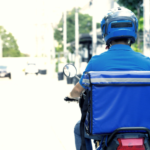
Innovative Sourcing: One Food Bank’s Strategy to Find Scarce Food
- foodfightadmin
- April 21, 2023
- Climate Change, Food Bank Support
- rsc pages, rscl
- 0 Comments
Food banks are benefiting from technology firms specializing in food recovery, such as Divert Inc., which are revolutionizing the process of acquiring highly desirable, convenient, and nutritious food for their clients. These firms have a dual objective: reducing greenhouse gas emissions by converting wasted food into renewable energy and supplying edible food to food banks. The result is a win-win situation where retailers prevent food waste while also fighting food insecurity.
Central California Food Bank‘s partnership with Divert Inc. showcases the potential of these new food-sourcing relationships. When the Fresno based food bank began working with Divert in 2018, they were unsure what to expect but quickly realized the tremendous value of the product they were receiving. According to Jaclyn Pack, the Director of Food Acquisitions at Central California Food Bank, the product obtained through Divert was of exceptional quality and difficult to acquire through traditional means.
Divert‘s approach makes it effortless for retailers, including grocers and drug stores, to donate food. They analyze and automate back-end processes to ensure that donating food becomes the default decision, even easier than discarding it. Ben Kuethe, Vice President of Customer Solutions & Success at Divert, emphasizes the importance of implementing technology that supports retailers’ workflow and minimizes the human decision-making.
Since their partnership began, Divert has sent nearly eight million pounds of food to Central California Food Bank. One significant source of donations is CVS drug stores along the West Coast, which sends around 400 large bins of food to the food bank and its partner organizations every week. These bins contain a variety of items, such as cereal boxes weighing up to 100 pounds or canned food weighing between 800 to 900 pounds. The food bank quickly distributes the shelf-stable food received from CVS through its agency partners, who have a high demand for these nutritious products.
Central California Food Bank has plans to open a free grocery store called the First Fruit Market in June. This grocery store, located within a larger facility that brings together various social service organizations, will allow the food bank to optimize the distribution of donated products received from CVS. The goal is to create a diverse mix of products without having to purchase large quantities at a time, effectively reducing the cost of stocking important shelf-stable items.
Divert has been responsive to the operational needs of Central California Food Bank. In the past, donated products arrived at the food bank’s warehouse in a mixed manner, requiring volunteers or staff to sort through the items. This process was time-consuming and often included problematic offerings like chocolate candy bars that had low demand and melted in the warehouse’s heat. As a result, Divert has implemented barcodes, scanners, and other automation to pre-sort the food before delivering it to the food bank.
This tailored approach by Divert aligns with the broader trend of food banks becoming more proactive in building food-sourcing relationships that suit the needs of their communities. Natalie Caples, Co-CEO of Central California Food Bank, emphasizes the importance of engaging in conversations that create mutually beneficial partnerships. Food banks no longer accept products that cannot be used, but instead aim to provide quality food that meets the nutritional needs of their neighbors in need.








